In the first part of this series we’ve seen the much maligned Yashica Y35 actually prove it’s much better than proper toy cameras and even an awful £11 ‘new’ cam from eBay. But how does it fair against some genuine entry level digital cameras.
Now I’m happy to acknowledge the Y35 is no clinical killer camera. In the fuller review it’s 1/2.5″ sensor and fixed focus have their limitations. It also is pretty expensive for what it is.
For less than the money than I paid as a Y35 kickstarter backer, I could buy and later sell the the retro charmer and lens below. But they’re CSC I here you yell ! However I’d freely admit that almost any £100 plus compact from a major brand made in the last 4 years will out-perform the Y35 clinically

So going high end would never be a fair test.
Testing Spec ?
So we need to set the sights lower for a proper test. To this end we’ll match our Y35 against not necessarily the finest compacts ever. Nor even some of the average ones. We need to go cheap and dated
So our test group is
- Vivitar Vivcam T324N – 12MP entry level from 2010
- Kodak EasyShare C142 -10MP another camera from 2010
- LG K8 (2017) – A budget but reasonable modern smartphone
ROUND 1 Y35 v The Cheap Digicams
The vivitar was launched in 2010 (as dated by manual) and is till sold new today abet updated with a zoom toogle on the front of shutter button like the Kodak. It uses CMOS sensor wheres the Kodak which was launched the same year uses a CCD
Kodak Easyshare C142 Spec and Cost
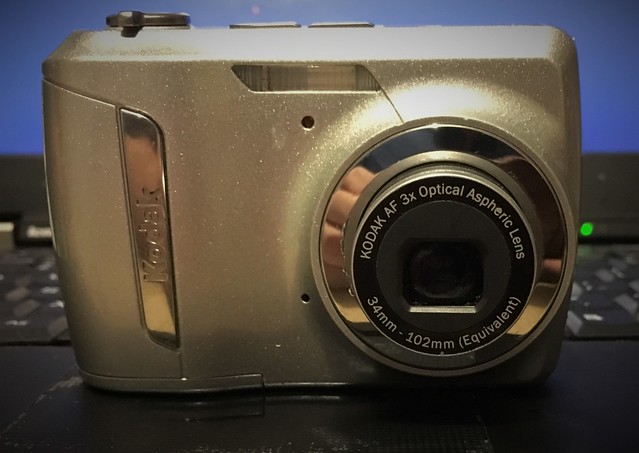
- 10 MP CCD sensor 1/2.5″
- 34-102mm (equivalent) zoom 1:2.9-5.2
- 8-1/1600
- ISO 80-1600
- SDHC up to 32Gb
- 2.6″ TFT LCD
- 2xAA
- £10 plus P&P (I paid over the odds)
The kodak’s build and styling is the most interesting here. The camera for a budget ($89USD on launch) is pretty well screwed together and bar the phone is the best assembled bit of kit. Shame the styling is not great. Mainly plastic bodied but reassuringly solid and the LCD is glass protected. Mines was an average silver but it came in a variety of hues. I suspect it is better looking with colour.
The switches are amongst the best mechanical ones on test. The rear 4 way control rocker works and the camera has a series of menu buttons on the side of the LCD.
The default mode is smart capture but you can switch to program or 20 scene modes. Program gives you access to all settings allowing you to fix ISO, AWB and colour palette ( including B&W). On the top plate as well as shutter with zoom toggle, ou have the on/off, flash and mode button. although EV comp is limited to +/-2 you can alter in 1/3 steps
Testing is in the auto everything mode ( smart capture).
Vivitar T324N Spec & Price

- 12 MP CMOS sensor
- 6-12.8mm 1:3-4.5 (x3 35mm equivalent optical zoom)
- 2.5″ TFT LCD
- up to 32Gb SDHC
- VGA video
- 3xAAA batteries
- ISO 100-400
- Mini USB
- I paid £5 plus P&P. New sells for ~£30
My experience with Vivicams has not been good but this pleasantly surprised me at first glance. The shell although mainly plastic does feature a nice brushed metal front plate. It is laid out like many digital compacts with most controls on rear beside the LCD. The controls are not that responsive and can be a pain to get setting but this a second hand model and the newer revised model may be better.
You do get some choice on menus with 10 program modes and 4 colour palette (including B&W). The camera has face & smile detection and claims some anti-shake. You can EV adjust in full stops but from the menus. For the purposes of the test we shot at 12MP, ultrafine with normal sharpness with AWB. This was all in auto scene mode
Yash or Trash

The Yashica’s full spec can be found in my earlier review. In brief it features a fixed focus 8mm 1:2.0 fixed aperture 4 element lens with a 14MP CMOS 1/2.5″ sensor. The camera has no LCD and needs to be mechanically wound on between shots. The only way of controlling the shooting mode is switching the DigiFilm (so effectively means at the moment just 6 film style filters). Other than that and the shutter the only other user control is the EV compensation (+/-2 in full stops). You can however use screw in filters.
Although stylish the bulit quality is some what flimsy. Current no flash and there doesn’t appear to an option. The cold shoe is there to support a not yet available clip on LED light. It also isn’t a standard size.
For the direct comparative shots we’ll use the DigiFilm 200 module (made to resemble 200 ISO colour film)
Taking the shots
The immediate difference between the Y35 and the other 2 is the lack of LCD. You’ll hold this up to your eye like a film camera and use the simple viewfinder. You have a 2-3 second delay until the rear LCD turns from purple to red indicating you can take a shot. You need to wind the camera and the shutter depress is not great with a step process. Worst still there is a ~3 second lag from fully depressing the shutter until you here the shutter noise. Worse still is in low light that doesn’t mean the shot is actually taken.
You have no feedback about any settings at the time. In my camera’s case I can forget looking in EXIF data after the event. Everything seems fixed (all shots were 1 second according to EXIF). Others on Flickr seem to get real world shutter speeds
The digital lack viewfinders so you’ll end up holding them in the typical digital pose 20-30cm from your face. The Kodak takes longer from power up to shot and often even the focus point doesn’t appear bwhen you half depress shutter. Worth waiting for that as it’ll track if you or your subject move. The Vivitar boots quicker and brings up a focus square that’s more. The Kodak has a clearer, sharper display whilst the vivitar seems to stick on every possible setting icon it can even in auto mode.
Results
AWB indoor light test
A quick and dirty test was to take a shot of my kitchen table cloth at night under a warm LED bulb. In daylight the cloth looks pretty close to this film shot
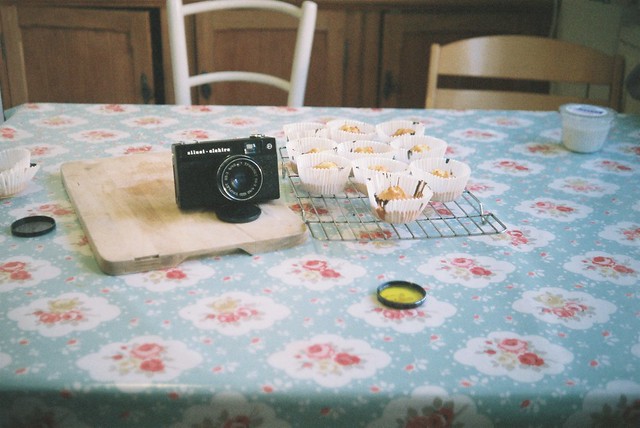
So how did our cameras fare ?
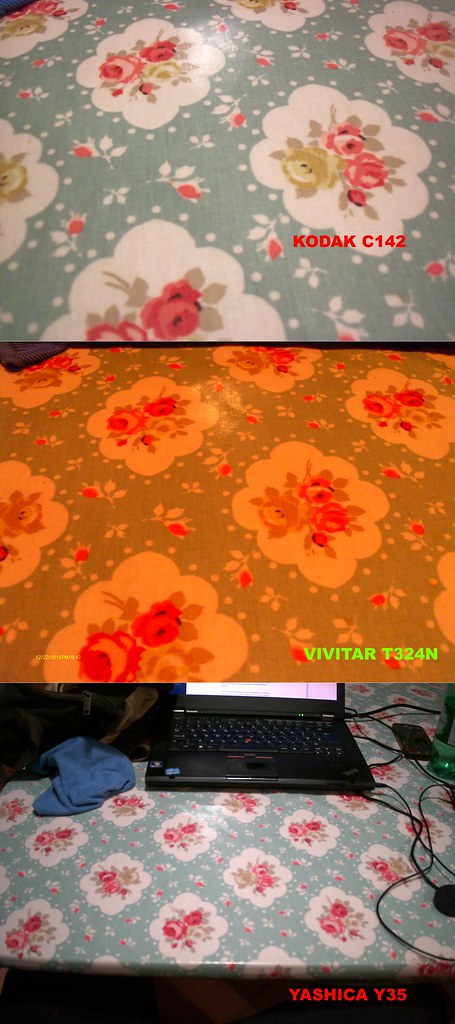
Well the early promise from the vivitar starts to fade. The AWB of the T324N is frankly awful. Both the Kodak and Yashica do alright. I think I prefer the Kodak but just. What do you think ?
This isn’t a test of focus and image noise as it’s too close for the Yashica to actually focus properly. However there is little to separate the Kodak and Vivitar centrally. Worth noting the Vivitar has opened up to f/2.8. The Y35 is showing its radial (barrel) distortion as well.
3m Shooting
AKA the garage door shot. This is a shot taken at wide end of things for the compact zooms. They were taken within minutes of each other.
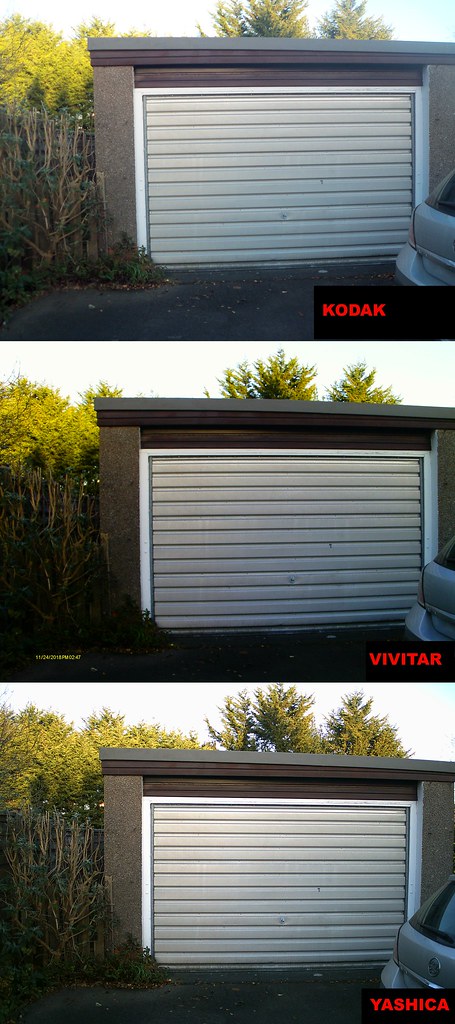
Now all look okay for web use here but you need to zoom in.
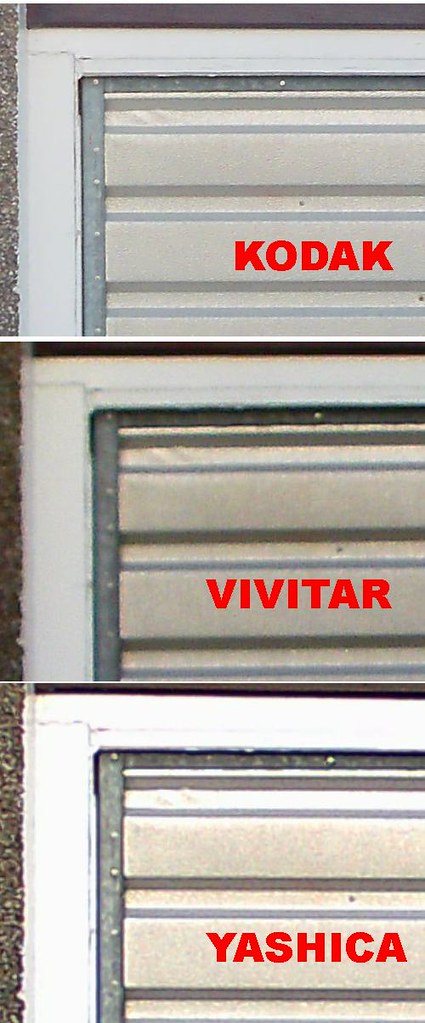
The Kodak is the sharpest despite having the lowest pixel count. The fixed focus Yashica actually beats the AF Vivitar into 3rd place for sharpness. The vivitar’s colour palette issue continues – the shingle is just not that brown. What’s also interesting is again it’s a f/2.8 shot again. Not massively surprising as the Kodak uses asimilar aperture. What is surprising is every shot I’ve taken on the Vivitar at wide is is at f/2.8 ! Even with the flash on at 1 m and when the camera is optically zoomed out. Notable the focal length in EXIF doesn’t change either
In it’s defense it has less barrel distortion than the other 2. However chromatic aberrations are more evident with it and the Kodak. The Yashica has less of that going on although there’s a lot of sharpening going on leaving a little ghosting. The Kodak has far less noise at higher ISO than the Vivitar. The vivitar gets noticably grainy with shots above ~300 ISO. We obviously can’t make comparisons on that latter point to the Yashica due to the lack of reliable EXIF and the setting are set to give grain to replicate film.
Long shooting
Things get really interesting here. Both film & Digital compact AF cameras have a reputation of being weak here (that’s why most have a landscape mode which locks focus near infinity and narrows aperture). Fixed focus cameras rely on hyperfocal distance meaning that long shots rely on the softening still being acceptable on prints.
Our sample shot in December on a dull lunchtime in Scotland (ignore the Vivitar datestamp) pushes these cameras a bit.

Now they all look acceptable for the web but the Vivitar is again weakest. Things are tougher between the Yashica Y35 and Kodak. the Kodak is marginally more sharper. You can see more detail (but just) on the church signs. But what’s stricking is the Yashica is not grossly lagging behind. It also has less sharpening and fringing artefacts despite being a fixed focus. I’d also argue it is the one of the 3 best exposed.
Low Light Shooting in Auto
In a word don’t. The results aren’t that great on auto or DigiFilm 200.

That said the Yashica captures more detail. You can actually see there something on the sign if you zoom in. It is the sharpest and has the least noise of the 3. It and the Vivitar underexpose whereas the Kodak overexposes. However If you compare it to a more modern camera in a smartphone all look poor.
Changing the settings doesn’t help too much.

The Kodak on High ISO mode overexposes more. The Vivitar is slightly better on night scenery mode. Switching the Yashica to 1600 ISO DigiFilm just alters the graininess and colour palette. B&W is worth looking at however.

A modern camera even a mid range smartphone handles this much better. However you still get some noise and processing.

Other Thoughts
For brevity I’ve kept things limited in shots here. But across the board on test I get similar results. The Yashica is better than the Vivitar by a wide margin and it it chases the Kodak optically. It is worse re radial distortion but beats the other 2 in terms of fringing although it over shrapens. The Kodak is arguably more capable and much the Y35 offers in can be done in post processing.
That said for a fixed focus number things aren’t that bad and in B&W mode in low light the Y35 gets interesting. It also has a lot of retro appeal
I’m not your enemy , Ming is !
The problem is that I don’t think the digital compact market is what the Y35 is gunning for. Although I’ve not exactly tested the creme de la creme of the second hand market, it’s clear that most reasonable compacts will clinically be stronger,
But there is some retro appeal and that’s what they’re trying to tap into. So how does it fare against a reasonably priced smartphone.
The typical ~£100 Smartphone – LG K8 (2017)
The K8 is no cutting edge or killer smartphone.
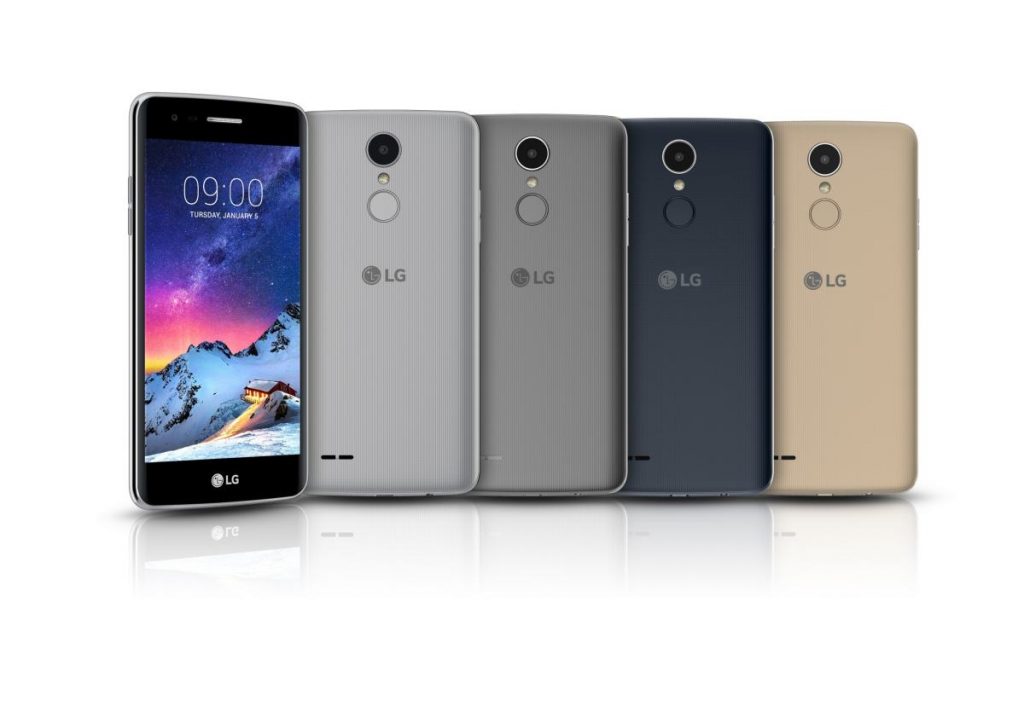
However it was one of the better entry level phones falling into the ~ £100 market. I’ll leave the phone in general and focus on the rear camera. It’s a 13MP AF affair with a fixed f/2.2 aperture combined with not exactly massive 1/3″ sensor. Unlike any camera on test this benefits from touch spot focusing and metering.

I picked the K8 for several reasons. I wanted to use a run of the mill common phone. Neither a real entry level basic number nor a high end phone. It is arguably the best constructed device on test and has the best controls with a massive 5″ HD touchscreen LCD viewfinder that wipes the floor in quality terms
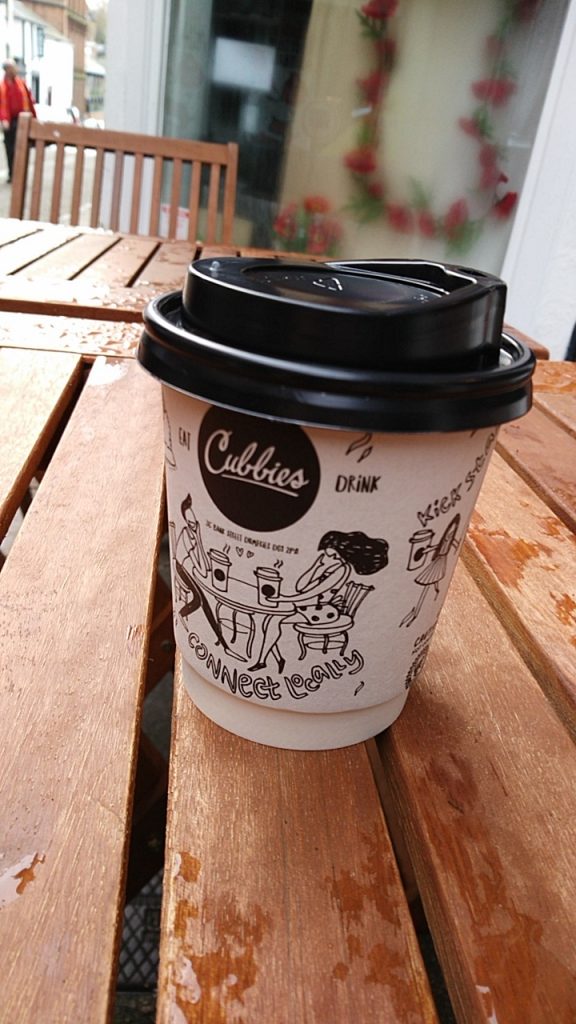
The sharpness on point is as good as the kodak re fine details and the touch focus/metering is a boon. But It creates a lot of noise off focus. It also pincushion distorts. I’d say overall it’s strengths and weakness make it an interesting comparison to the Y35.
What it and other smartphones have is something the Y35 just can’t compete with. On board editing & filtering via apps from the built in camera ones to things like instagram and Flickr.
That makes the Yashica a hard sell at its price given the limitation.

Going really retro
The other big problem for the Y35 is film.
Granted the camera it is based on (the Yashica Electro 35) can set you back between £40-75 for a working ideally CLA’d version. But you will get a much greater experience. Don’t have those beans well by a cheaper Yashica like the ME1
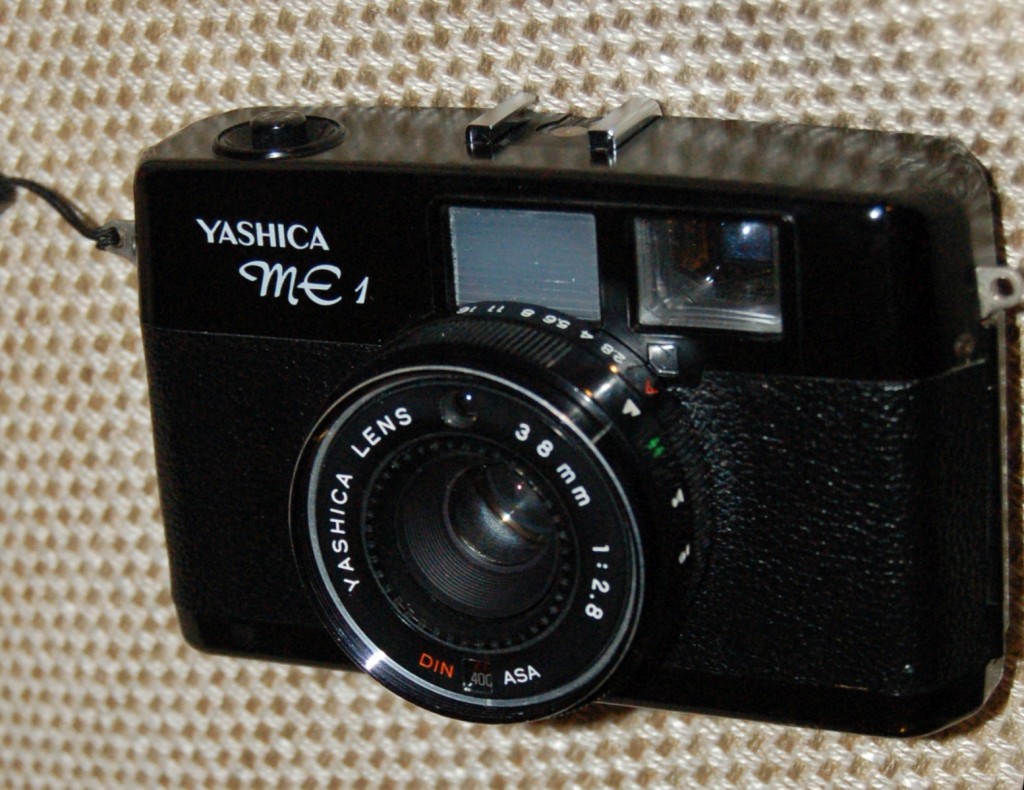
Or the Brilliant retro Minister III
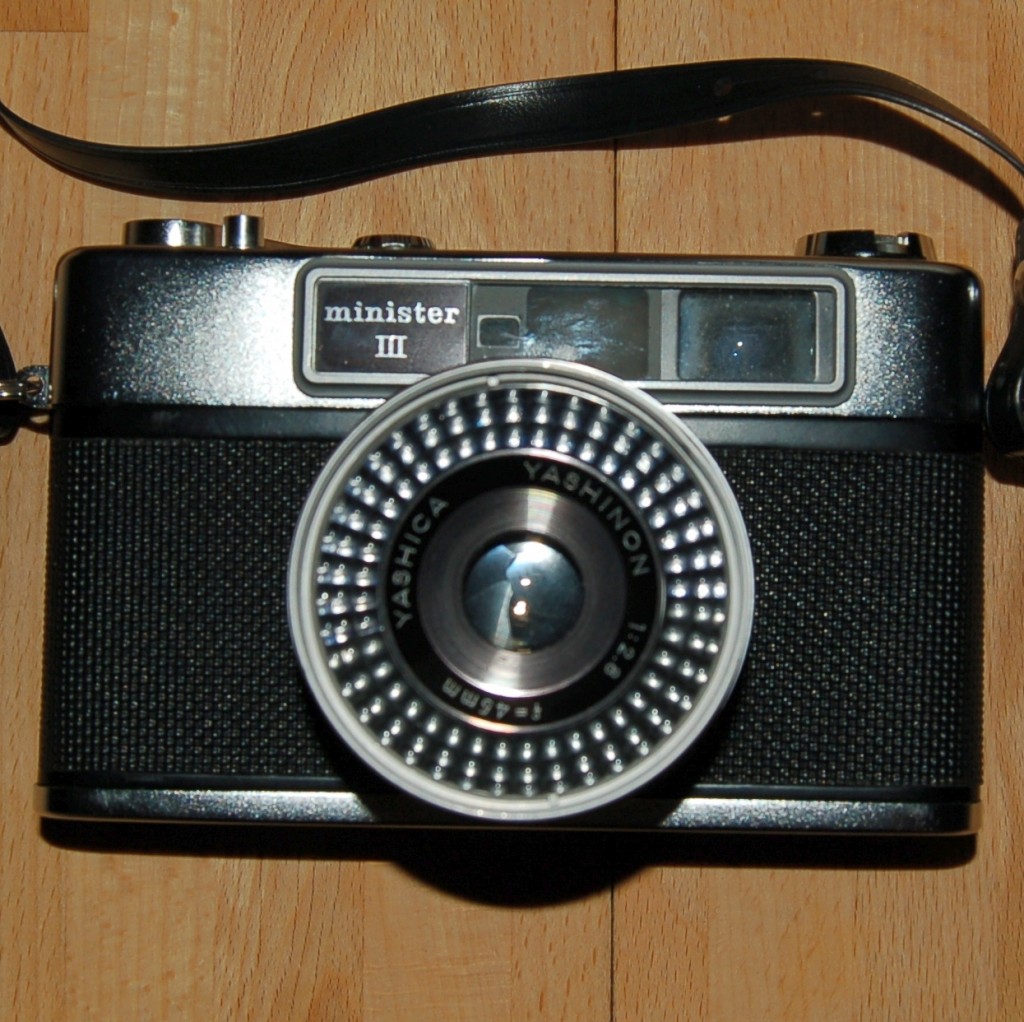
Or even a Halina 35X Super
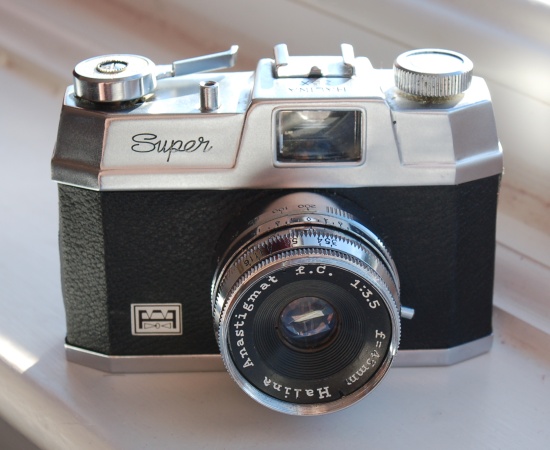
You’ll get a true retro camera with an interchangeable module known as film and much more creative control. Even with a Halina….

Conclusion
I manage to prove that you can buy a second hand digital compact that will clinically beat the Y35 and that it is no better than a £100 smartphone.
But that isn’t the point.
The Y35 is the closest you’ll get to shooting a film camera in digital format. Granted you can easily buy a cheaper but clinically better second hand digital and just post shooting apply some film filters to the same effect. But that misses the point. This is a camera that feels like you shoot a 35mm compact. It shares the same footprint as cameras like the Konica C35. It needs winding on and you’ve a film like cartridge. Also there’s no LCD pre/review screen to fall back on.
The problem for the Y35 was always the name and expections. Had Halina, Praktica or Hanimex been the name used or if the quality was a little better. For £60-70GBP the Y35 would have seemed reasonable. If you want to buy the Y35 it current costs £190 for the camera and one film. That figure is influenced by the Brexit turmoil but however the USD figure is a massive $240. For that money you’d want better build quality, bigger sensor and arguably the ability to focus the camera.
Cost of Reason ?
For the same money you can buy some quite serious bridge cameras.
As a backer who paid nearer £125GBP for the camera and 4 DigiFilms things were still over priced but less unreasonable
You can buy a great looking vintage film camera for a few quid still and that’s the biggest problem at this price. Yes film and processing is pricey but my £5 Kodak Retinette oozes more charm, has more feedback and takes optically better shots. I’ll also need to shoot and get processed around 20 films before I come near the current cost of a Y35
B+ for effort but a C for implementation.

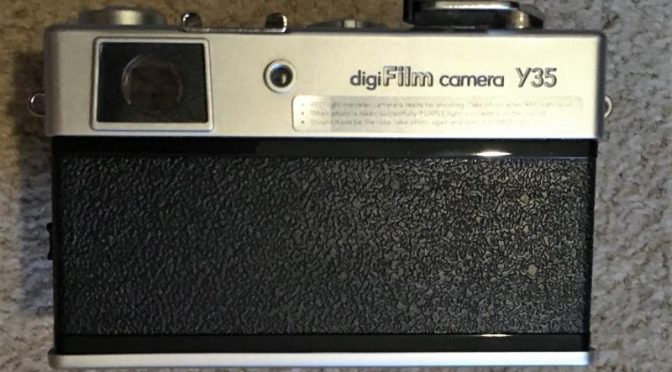
Super set of articles, very thorough. It makes me want to buy more cheap digital, especially Kodak though.
The Kodak was okay but you can buy better. I just picked the first branded camera a tenner or under that I could see that was ending soon on eBay
Like you I don’t think the Y35 is too bad, to be honest I like it (it fun). It is meant to compete with digital compacts or camera phones, I think it’s main competition is the Digital Holga. I own both cameras and have reviewed both on my blog, far less extensive reviews than you did but the best I can do.
I do agree the Y35 is overpriced but check eBay – lots of people who backed it on Kickstarter seem desperate to be rid of theirs!
I saw your “dull lunchtime” image and thought that it looked a lot like Lochmaben. Then I realised that is *is* Lochmaben!
It is not so often that one comes across something like this coming out of D&G
I stay in Borgue, just west of Kirkcudbright. I have been in Spring Fling for the last few years, but it is off this year – bugger that virus!